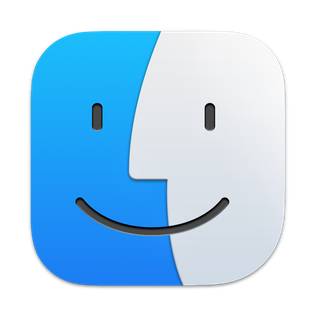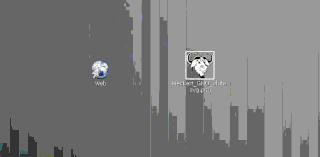This article needs additional citations for verification .(January 2017) |

The Control Strip is a user interface component introduced in the "classic" System 7 Macintosh operating system.
This article needs additional citations for verification .(January 2017) |

The Control Strip is a user interface component introduced in the "classic" System 7 Macintosh operating system.
The Control Strip was initially released in 1994 with the PowerBook 500 series of notebook computers and the PowerBook Duo 280 subnotebook computers, at that point shipping with System 7.1. Later on it was made available to desktop and portable Macintosh computers, beginning with System 7.5.3.
Apple removed Control Strip in 2001 as a consequence of its move to Mac OS X. Apple initially attempted to integrate the Control Strip’s features into the Dock. After this was found to be too clumsy, most of its features were again duplicated in the menu extras of 10.1.
An attempt was made at an open source reimplementation of the Control Strip for OS X, but it never received much developer traction and the last release is dated 27 October 2000. [1]
Somewhat like the system trays of other operating systems, the Control Strip allowed easy access to status information about and control of simple tasks such as screen resolution, AppleTalk activity, battery status etc. Each task appears as a button-like popup menu called a module, these modules are managed in the Finder as individual module files, which have their own folder in the System Folder ("Control Strip Modules") and are executed alongside the Control Strip as it starts up or can be dragged directly onto the strip while it is running.
The Control Strip always anchors itself to the closest vertical screen edge (left or right,) but can be freely moved up and down both sides of any display by the user. It defaults to the lower left corner of the primary display on fresh systems.
Users can choose whether to turn the Control Strip on and off and even set a hot key to hide and reveal it using its control panel. Two buttons at either end allow the Strip to be collapsed and expanded (with the one opposite the screen edge also allowing the strip to be resized when dragged), while two more buttons just inside those allow one to scroll through a very full Strip. Holding down the option key while clicking turns the cursor into a distinctive hand shape that allows one to drag the Strip around the screen, rearrange modules within the Strip and drag modules out.
Functionality similar to the control strip is present in Apple's Touch Bar, which first launched in October 2016. By default, the rightmost portion of the Touch Bar displays a subset of system controls previously available on the keyboard's function keys. When Control Strip is expanded the full set of system controls is displayed. [2]
Control Strip modules were also available from many third parties. For example, Conflict Catcher included a Control Strip module to switch extension sets, while DAVE used one to toggle SMB/NetBIOS networking. Some novelty modules even consisted of calculators, calendars and games. Like the System Trays of other OSs, this was often abused to insert a flotsam module that merely launched and quit a given application.

The history of the graphical user interface, understood as the use of graphic icons and a pointing device to control a computer, covers a five-decade span of incremental refinements, built on some constant core principles. Several vendors have created their own windowing systems based on independent code, but with basic elements in common that define the WIMP "window, icon, menu and pointing device" paradigm.
AppleScript is a scripting language created by Apple Inc. that facilitates automated control of Mac applications. First introduced in System 7, it is currently included in macOS in a package of automation tools. The term AppleScript may refer to the scripting language, to a script written in the language, or to the macOS Open Scripting Architecture that underlies the language.

The Finder is the default file manager and graphical user interface shell used on all Macintosh operating systems. Described in its "About" window as "The Macintosh Desktop Experience", it is responsible for the launching of other applications, and for the overall user management of files, disks, and network volumes. It was introduced with the Macintosh 128K—the first Macintosh computer—and also exists as part of GS/OS on the Apple IIGS. It was rewritten completely with the release of Mac OS X in 2001.
In computing, a window is a graphical control element. It consists of a visual area containing some of the graphical user interface of the program it belongs to and is framed by a window decoration. It usually has a rectangular shape that can overlap with the area of other windows. It displays the output of and may allow input to one or more processes.

System 7 is the seventh major release of the classic Mac OS operating system for Macintosh computers, made by Apple Computer. It was launched on May 13, 1991, to succeed System 6 with virtual memory, personal file sharing, QuickTime, TrueType fonts, the Force Quit dialog, and an improved user interface.

A function key is a key on a computer or terminal keyboard that can be programmed to cause the operating system or an application program to perform certain actions, a form of soft key. On some keyboards/computers, function keys may have default actions, accessible on power-on.

In computer graphical user interfaces, drag and drop is a pointing device gesture in which the user selects a virtual object by "grabbing" it and dragging it to a different location or onto another virtual object. In general, it can be used to invoke many kinds of actions, or create various types of associations between two abstract objects.
The taskbar is a graphical user interface element that has been part of Microsoft Windows since Windows 95, displaying and facilitating switching between running programs. The taskbar and the associated Start Menu were created and named in 1993 by Daniel Oran, a program manager at Microsoft who had previously collaborated on great ape language research with the behavioral psychologist B.F. Skinner at Harvard.

Aqua is the graphical user interface, design language and visual theme of Apple's macOS and iOS operating systems. It was originally based on the theme of water, with droplet-like components and a liberal use of reflection effects and translucency. Its goal is to "incorporate color, depth, translucence, and complex textures into a visually appealing interface" in macOS applications. At its introduction, Steve Jobs noted that "... it's liquid, one of the design goals was when you saw it you wanted to lick it".

Mac OS 8 is the eighth major release of the classic Mac OS operating system for Macintosh computers, released by Apple Computer on July 26, 1997. It includes the largest overhaul of the classic Mac OS experience since the release of System 7, approximately six years before. It places a greater emphasis on color than prior versions. Released over a series of updates, Mac OS 8 represents an incremental integration of many of the technologies which had been developed from 1988 to 1996 for Apple's overly ambitious OS named Copland. Mac OS 8 helped modernize the Mac OS while Apple developed its next-generation operating system, Mac OS X.
PlainTalk is the collective name for several speech synthesis (MacinTalk) and speech recognition technologies developed by Apple Inc. In 1990, Apple invested a lot of work and money in speech recognition technology, hiring many researchers in the field. The result was "PlainTalk", released with the AV models in the Macintosh Quadra series from 1993. It was made a standard system component in System 7.1.2, and has since been shipped on all PowerPC and some 68k Macintoshes.

A window manager is system software that controls the placement and appearance of windows within a windowing system in a graphical user interface. Most window managers are designed to help provide a desktop environment. They work in conjunction with the underlying graphical system that provides required functionality—support for graphics hardware, pointing devices, and a keyboard—and are often written and created using a widget toolkit.
The Appearance Manager is a component of Mac OS 8 and Mac OS 9 that controls the overall look of the Macintosh graphical user interface widgets and supports several themes. It was originally developed for Apple's ill-fated Copland project, but with the cancellation of this project the system was moved into newer versions of the Mac OS. The Appearance Manager is also available free as part of a downloadable SDK for System 7.
On the classic Mac OS, extensions were small pieces of code that extended the system's functionality. They were run initially at start-up time, and operated by a variety of mechanisms, including trap patching and other code modifying techniques. Initially an Apple developer hack, extensions became the standard way to provide a modular operating system. Large amounts of important system services such as the TCP/IP network stacks and USB and FireWire support were optional components implemented as extensions. The phrase "system extension" later came to encompass faceless background applications as well.

A menu bar is a graphical control element which contains drop-down menus.
The Windows shell is the graphical user interface for the Microsoft Windows operating system. Its readily identifiable elements consist of the desktop, the taskbar, the Start menu, the task switcher and the AutoPlay feature. On some versions of Windows, it also includes Flip 3D and the charms. In Windows 10, the Windows Shell Experience Host interface drives visuals like the Start Menu, Action Center, Taskbar, and Task View/Timeline. However, the Windows shell also implements a shell namespace that enables computer programs running on Windows to access the computer's resources via the hierarchy of shell objects. "Desktop" is the top object of the hierarchy; below it there are a number of files and folders stored on the disk, as well as a number of special folders whose contents are either virtual or dynamically created. Recycle Bin, Libraries, Control Panel, This PC and Network are examples of such shell objects.

Workbench is the desktop environment and graphical file manager of AmigaOS developed by Commodore International for their Amiga line of computers. Workbench provides the user with a graphical interface to work with file systems and launch applications. It uses a workbench metaphor for representing file system organisation.

A mouse button is an electric switch on a computer mouse which can be pressed (“clicked”) to select or interact with an element of a graphical user interface. Mouse buttons are most commonly implemented as miniature snap-action switches.

The Macintosh "System 1" is the first major release of the classic Mac OS operating system. It was developed for the Motorola 68000 microprocessor. System 1 was released on January 24, 1984, along with the Macintosh 128K, the first in the Macintosh family of personal computers. It received one update, "System 1.1" on December 29, 1984, before being succeeded by System 2.